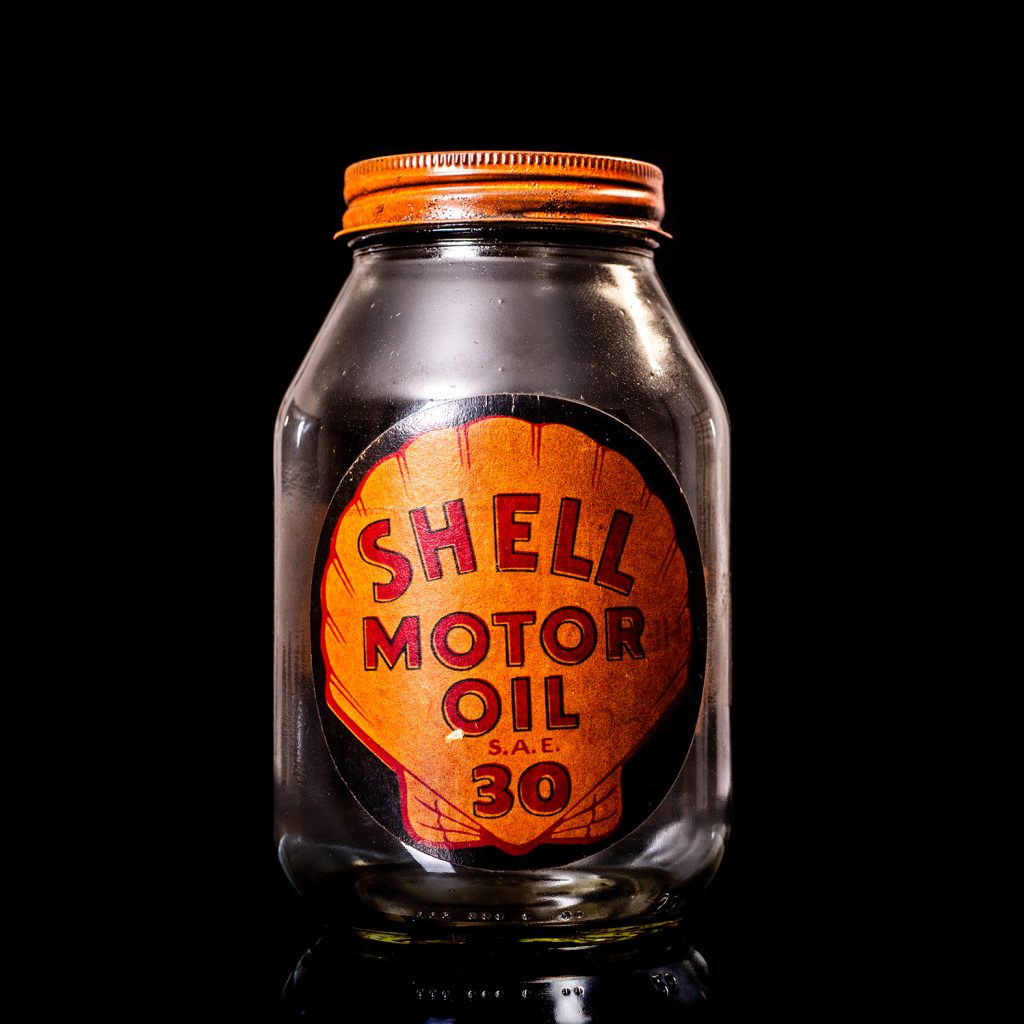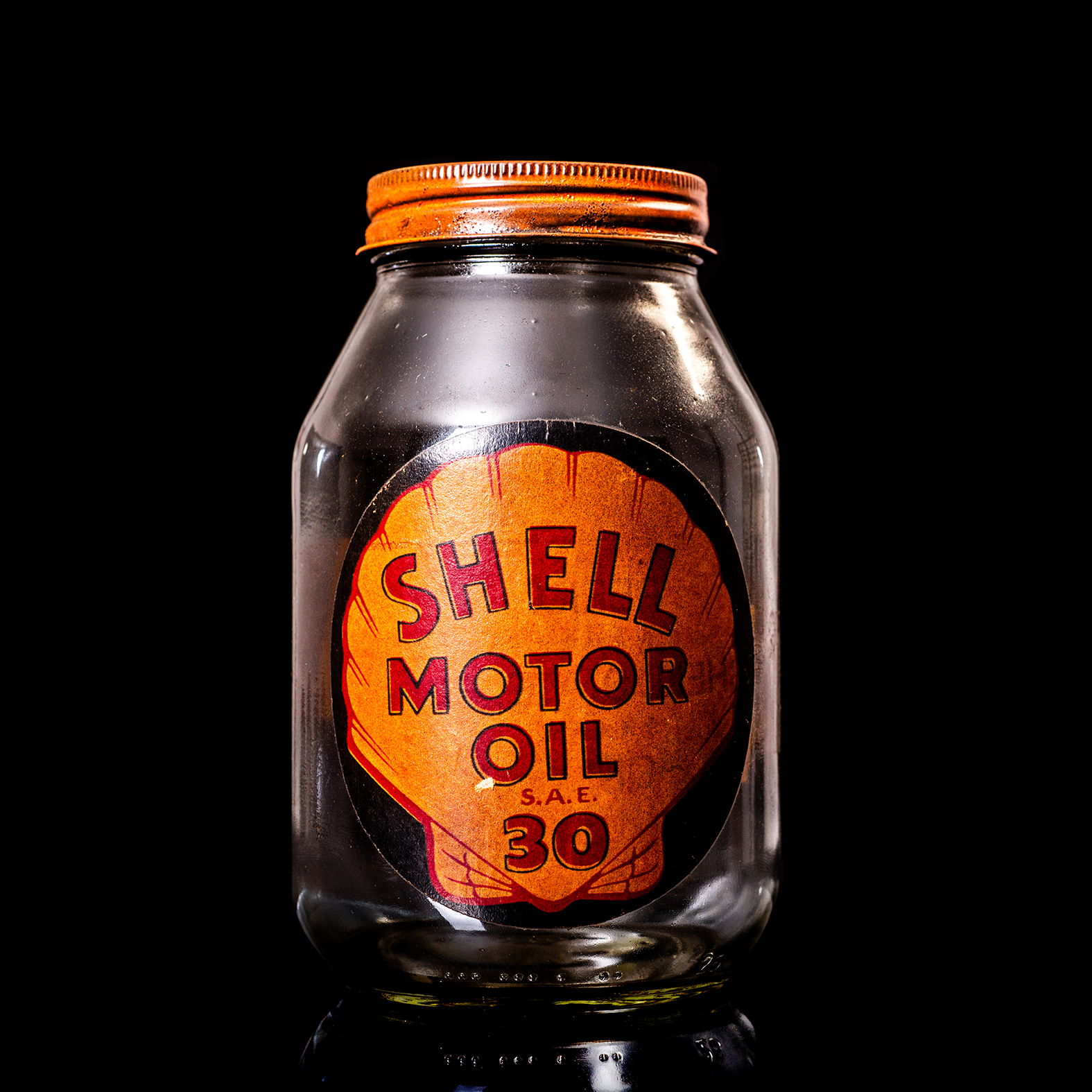A captivating journey awaits every petroliana enthusiast: tracing the transformation of Shell oil cans from plain containers to iconic collectibles. Here’s how Shell’s packaging mirrored industry innovation and branding evolution:
1. Early Glass Bottles & Tin Pitchers (1910s–1930s)
Shell began by selling motor oil in factory-filled, sealed glass bottles between 1910 and 1934—a wartime return to glass occurred during WWII due to steel shortages collectorsweekly.com+5lambtonmuseums.ca+5lubesngreases.com+5. Before this, oil was dispensed from open steel pitchers, which lacked branding and were harder to handle.
2. Tin-Plated Cylindrical Cans (1920s–1940s)
By the 1920s, Shell and other brands adopted soldered, lead-seamed cylindrical cans—durable and ideal for transport. Their embossed Shell logos and swivel spouts are now celebrated for craftsmanship and nostalgia lambtonmuseums.ca+1lambtonmuseums.ca+1.
3. Cardboard Wartime Cans (1940s)
During WWII, metal was diverted to the war effort. Shell avoided shortages using paper-sided cans with metal ends, widely used into the 1980s lambtonmuseums.ca.
4. Aluminum & Composite Cans (1950s–1970s)
Innovation struck in 1958 with the debut of aluminum oil cans cam.cotomo.com+14lambtonmuseums.ca+14en.wikipedia.org+14. Over the 1950s and ’60s, composites emerged—lightweight, functional, and increasingly replaced metal packaging .
5. Plastic Bottles & Modern Packaging (1960s onward)
By the late 1960s, plastic bottles dominated the market. They offered durability, resealable design, and cost-efficiency—essentially marking the end of metal cans in mainstream use.
Why Collectors Love These Vintage Cans
- Branding Showcase: From Shell’s transition to vibrant red and yellow to embossed logos and swivel spouts, these cans reflect evolving brand identity en.wikipedia.org+1lambtonmuseums.ca+1en.wikipedia.org+11cam.cotomo.com+11hatchwise.com+11.
- Packaging Milestones: Each design—from glass to tin, cardboard, aluminum, composite, and plastic—maps technological progress and material science.
- Rarity & Nostalgia: Factory-sealed bottles, embossed tin cans, or wartime paper variants are now scarce, with high demand from collectors and historians.
Featured Vintage Shell Cans
- Glass quart bottle (1910–1934): Sealed, blow-molded with Shell branding en.wikipedia.org+15lambtonmuseums.ca+15lambtonmuseums.ca+15.
- 1920s swivel-spout tin can: Iconic logo, functional spout—once a car‑side essential.
- WWII-era paper-sided can: Metal ends paired with cardboard—a wartime innovation.
- Early aluminum can (1958): Durable, sleek, and lightweight.
- Shell X‑100 metal can (late 1940s–’50s): Bold red and yellow livery—still popular on eBay for $50–$70 lambtonmuseums.caebay.com+3ebay.com+3ebay.com+3.
In Summary
Shell’s oil cans did more than contain lubricant—they told a visual story of branding, material innovation, and industrial design. Collectors prize them for their historical narrative, aesthetic value, and intimate connection to automotive heritage.
Collector Insights Wanted!
Do you own a rare Shell can, like a swivel-spout tin or wartime paper version? Found one in your grandfather’s garage or at a flea market? Comment below—share photos, stories, or even corrections. Let’s build a richer history together!




Leave a Reply